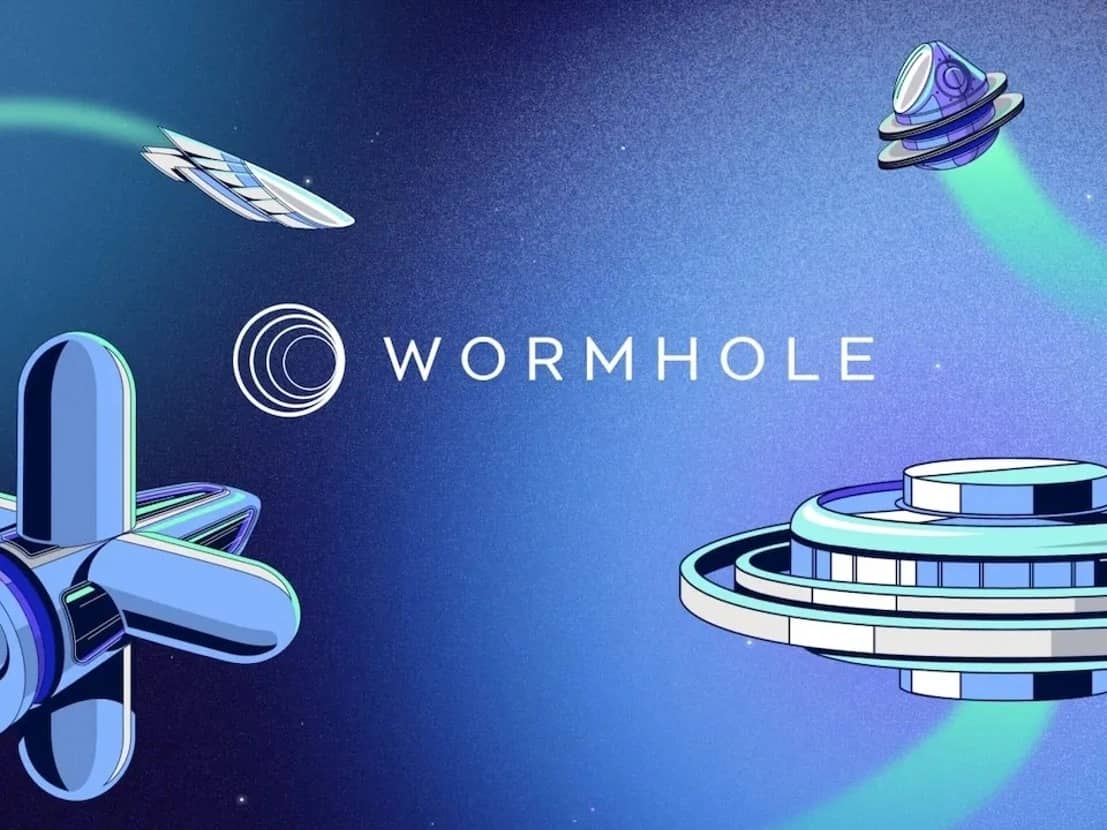订阅 wiki
Share wiki
Bookmark
Wormhole
Wormhole
Wormhole 是一种跨链协议,可在不同的区块链网络之间实现无缝的资产转移和互操作性。它促进了高效的通信和交换,弥合了不同生态系统之间的差距,从而增强了去中心化金融 (DeFi)功能。Saeed Badreg、Anthony Ramirez 和 Tony Jin 是 Wormhole 和 Wormhole Labs 的联合创始人。[1]
历史
Wormhole 最初由 Jump Crypto 推出,作为在 区块链 之间转移代币的桥梁,特别是 Solana 和 Ethereum。随着 Wormhole V2 的推出,它演变成一种通用的消息传递协议,促进区块链间的通信。这项技术支持各种功能,例如代币转移、跨链治理和 NFT 转移,用于多链应用程序。Wormhole V2 还将其服务扩展到包括 Terra 和 BNB 智能链。2023 年 11 月,Jump 和 Wormhole 宣布分离。此后,Wormhole 筹集了 2.25 亿美元,公司估值为 25 亿美元,投资者包括 Brevan Howard、Coinbase Ventures、Multicoin Capital 和 Jump Crypto。 [2]
Wormhole 漏洞
2022 年 2 月 2 日,Wormhole 遭受了一次重大的安全漏洞攻击,导致约 3.25 亿美元被盗。攻击利用了项目 GitHub 存储库中最近一次更新中的漏洞,该漏洞尚未部署。当 Wormhole 的 Twitter 帐户宣布由于潜在的漏洞调查而进行网络维护时,该漏洞被发现,团队后来向黑客提供了 1000 万美元的赏金以返还资金。 [9]
攻击者设法伪造了交易的有效签名,允许他们在没有存入等量资金的情况下铸造 120,000 个 wETH,而无需存入等量的资金。这被兑换成约 2.5 亿美元的 以太坊,并发送到黑客的帐户,耗尽了该平台的 以太坊 抵押品 的重要部分。修复此漏洞的代码已于 1 月 13 日编写,并在攻击当天上传,这表明更新尚未应用于生产应用程序。一位 Twitter 上的软件开发人员指出,代码上传包含大量更改,可能会提醒攻击者注意安全修复。 [9]
此次攻击在 包装以太坊 和 Wormhole 桥中持有的常规 以太坊 之间造成了赤字,导致 Solana 加密货币 的价值 下跌 10%。Wormhole 团队宣布计划用更多的 以太坊 替换被盗的 抵押品 资金,要求该公司找到 3.25 亿美元的资产来弥补损失。 [9]
Ripple 集成
2025年6月,Ripple 宣布将 Wormhole 与 XRP Ledger (XRPL) 及其 EVM 兼容侧链集成,以增强多链互操作性。此次合作旨在支持机构对包括稳定币和代币化现实世界资产(RWA)在内的加密资产在跨不同 区块链 网络之间无缝转移的需求。此次集成使得 XRP 和其他发行的资产能够在跨超过 35 条支持的链(如 Ethereum、Solana 和 Avalanche)之间转移。David Schwartz, Ripple 的首席技术官表示:“如果你想要真正的广泛采用,互操作性至关重要。基础设施必须存在,不仅在一条链上,而是在跨所有链上。”此举是将 XRP Ledger 定位为机构金融和资产代币化中心这一更广泛战略的一部分。 [13]
Stargate 收购竞标
2025 年 8 月,当该协议的原始开发者 LayerZero 提出以 1.1 亿美元收购跨链桥 Stargate Finance 时,一场竞标战开始了。 [10] [11] 8 月 20 日,Wormhole 基金会 介入,宣布有意提交一份竞争性报价。基金会 表示,“STG 持有者应该得到更好的待遇”,认为 LayerZero 的出价是对 Stargate 持续业务、收入和大量国库持有量(包括 9200 万美元资产和超过 40 亿美元的月度桥接交易量)的“不合理低估”。 [14] 此举被视为加密协议领域首次重大链上竞标战的潜在开端。 [12] [10] Wormhole 基金会 认为,Wormhole 和 Stargate 的结合将创造“跨链基础设施领域的市场领导力量”。为了有时间正式提出其预计“明显更高”的反提案,Wormhole 正式要求 Stargate DAO 暂停正在进行的关于 LayerZero 收购的社区投票五个工作日。 [11] [14]
概述
Wormhole是一个跨链协议,连接不同的区块链网络,实现无缝的资产转移和互操作性。它的架构促进了不同区块链生态系统之间的高效通信,允许用户安全地在以太坊、Solana和币安智能链等平台跨链转移代币。通过其去中心化的守护者节点,Wormhole确保了网络安全和完整性,为开发者构建跨链应用程序和服务提供了基础。Wormhole通过促进互操作性和促进去中心化金融功能,为更广泛地采用和推进去中心化技术做出了贡献。 [2]
Wormhole交易始于Emitter,即任何在Wormhole核心合约上调用发布消息方法的合约。这会在交易日志中创建一个事件,记录发射器的详细信息和一个序列号。核心合约由被称为守护者的验证者监控,他们处理消息。Wormhole的安全性依赖于守护者节点的点对点网络,这些节点签署和验证消息。如果19个守护者中有13个签署了相同的消息,它将成为一个经过验证的操作批准(VAA)。这些VAA通过Relayer网络中继到它们的目的地协议,Relayer网络不能更改VAA,从而保持安全性。然后,目的地协议验证签名以完成传输。 [2]
生态系统
守护者网络
守护者网络是 Wormhole 的 oracle 组件,是整个生态系统的基础。理解守护者网络的技术方面对于全面理解 Wormhole 至关重要。Wormhole 依赖于分布式节点,称为守护者,它们跨多个区块链监控状态。守护者观察消息并独立签署相应的有效载荷,将其签名与其他签名结合形成多重签名。这些多重签名,称为 VAA,代表了 Wormhole 网络达成一致的状态共识。 [2][3]
目前有 19 个守护者,包括 Chorus One、P2P Validator 和 Figment 等验证者公司。守护者还监控链上的异常情况和智能合约数据,以确保代币跨区块链的逻辑移动。 [2]
Wormhole ZK
Wormhole ZK于2024年4月发布,代表着在增强协议信任假设方面向前迈出的一步。通过集成零知识(ZK)技术,Wormhole ZK引入了多项关键改进。首先,它实现了对消息的无需信任验证,从而增强了多链应用程序和用户的安全保障。验证Wormhole消息的参与对所有人开放,从而促进了贡献者的多元化和协作网络。新的区块链网络可以无缝加入Wormhole生态系统,无需明确同意,从而促进了更广泛的连接。ZK还通过建立统一的接口来访问跨不同区块链网络的数据,从而促进了多链应用程序。此外,ZK还提供了一种替代的消息验证方法,为用户提供了根据其特定需求和偏好量身定制的适应性选项。 [4]
Wormhole Gateway
Wormhole Gateway, 一个 Cosmos-SDK 链,桥接非原生资产到 Cosmos 生态系统中,并整合 跨 Cosmos 链的流动性。它链接来自 Ethereum 及其他地方的流动性和用户到 Cosmos 链和应用程序,通过一个基于 IBC 的流动性路由器。利用 Cosmos SDK 和 CosmWasm, Gateway 促进了 Wormhole Stack 和 Cosmos 生态系统之间的无缝组合。它的目标是提升流动性并扩展 Cosmos 生态系统,而不在资产转移上对用户施加额外的费用。通过遵守 IBC-原生 token 桥接的 ICS-20 标准,Gateway 确保资产的同质性,符合 Cosmos 协议,以及一个增强的用户体验。 [5]
Wormhole Gateway 依赖 Guardian 网络来执行一套强大的核心信任假设。Global Accountant, 一个在 Wormhole Gateway 上基于 CosmWasm 的模块,确保原生和包装资产的 1:1 对等同质性。作为一个智能合约运行保证了包装资产的数量不超过发送到一个 区块链 的原生资产。这个 Cosmos-基于的解决方案增强了 加密货币 领域的安全性。跨 另一个安全措施 Governor 监控连接的 区块链 上的资产流出,限制资产量来防止智能合约或 区块链 漏洞情况下潜在的跨链传染。 [5]
Wormhole Queries
Wormhole Queries 为集成者提供对守护者证明的链上数据的按需访问。目前的设置提供了一个简单的 REST 端点,用于通过代理启动链下请求。该代理将请求转发给守护者并收集法定数量的响应。结果包括编码的响应、请求详细信息和守护者签名,这些签名可以在链上验证。 [6]
Wormhole Connect
Wormhole Connect 是一个 React 组件,使开发者能够直接将 Wormhole 驱动的桥集成到 Web 应用程序中。它支持各种形式的桥接,包括原生资产桥、Portal 封装的资产桥、CCTP USDC 桥等。Connect 通过 gas dropoff 增强了每个桥,为用户提供额外的原生代币来支付 gas,并促进无 gas 交易,Connect 中继器承担用户的 gas 成本。[7]
W 代币
2024年3月6日,Wormhole 宣布空投其治理代币 W,并提供资格检查器供用户验证其符合条件的钱包。W 代币的最大供应量为 100 亿个代币,初始供应量为 18 亿个代币,占总供应量的 18%。[2]
代币经济学
在代币生成事件(TGE)中解锁的18%代币,其分配如下:[2]
- 社区和启动 (11%): 这包括用于空投、做市和流动性管理的代币。
- 生态系统和孵化 (5%): 分配给社区组织和开发者等战略贡献者。
- 基金会金库 (2%): 保留用于未来的协议开发计划,如研究和资助。
根据代币发布计划,剩余82%的代币供应量将在TGE后的未来四年内解锁,并且代币总供应量将在该期间结束时完全解锁。[2]
多链治理
Wormhole、Tally 和 ScopeLift 正在合作开发 MultiGov,这是一个行业首创的多链治理系统,很快将可供 Solana、以太坊 主网 和 EVM L2 上的 DAO 使用。Wormhole DAO 将采用 MultiGov,允许 W 持有者在任何支持的链上提出、投票和执行治理决策。这种集成代表着朝着去中心化和包容性决策过程迈出的重要一步,该过程超越了多个底层链。多链治理使 DAO 能够与代币持有者互动,而不管他们的链偏好如何。成员可以参与治理活动,例如从他们持有代币的任何链上提出、委托和投票。MultiGov 将迎合 Solana、以太坊 主网 和 EVM 兼容的 L2 上的 多链 DAO。随着更多项目跨多个链扩展,MultiGov 将简化 DAO 参与并扩展用户在主要生态系统中的参与度。[8]
支持的区块链
发现错误了吗?
